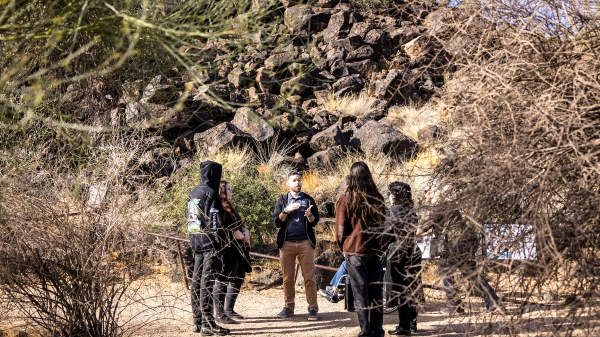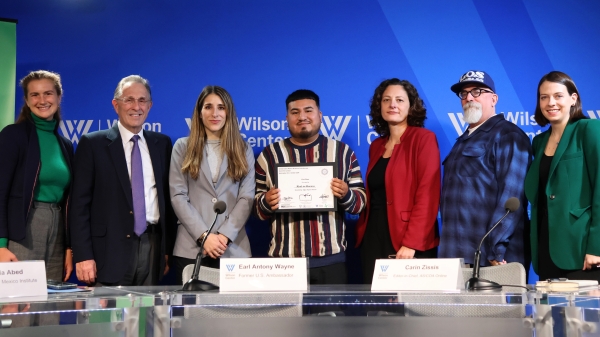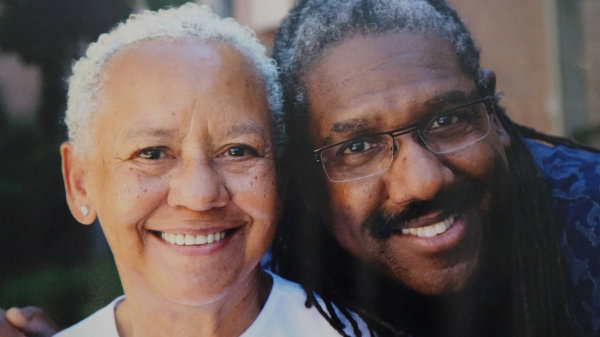Arizona FAFSA Challenge elevates financial aid awareness

Courtesy of Pixabay
Year after year, students who are eligible for aid fail to file the Free Application for Federal Student Aid (FAFSA) and miss out on money to support their college education.
FAFSA completion is strongly associated with postsecondary enrollment — students who complete a FAFSA are more likely to enroll and attend college. Yet Arizona ranks 48th in the nation for FAFSA completion.
On Sept. 21, Helios Education Foundation and College Success Arizona brought community partners together at Arizona State University for the Arizona FAFSA Challenge, a collective effort to increase the FAFSA completion rate among Arizona high school seniors.
Those community partners, invested in the success and future of Arizona students, came from across the state: Achieve60AZ, Arizona College Access Network, Arizona Commission for Postsecondary Education, Arizona Governor’s Office of Education, ASU, Maricopa Community Colleges, Northern Arizona University and the University of Arizona.
The FAFSA Challenge event discussed the importance of helping students envision college as an attainable goal and educating the Arizona community in how to support students in pursuing a postsecondary education through FAFSA completion.
“To help high school seniors with this important first step, Achieve60AZ has partnered with my office, the Arizona Commission for Postsecondary Education and Helios Education Foundation for something we call the Arizona FAFSA Challenge,” Arizona Gov. Doug Ducey said through a video message. “Last year, 43 percent of Arizona seniors completed a FAFSA. Our goal this year to increase that to at least 50 percent so more students can take their education to the next level and be successful in the workforce.
To that end, the Arizona Commission for Postsecondary Education, in partnership with the Arizona Governor's Office of Education and Achieve60AZ, has launched the Arizona FAF$A Challenge to promote and increase the FAFSA completion rate in Arizona.
On the challenge website is a dashboard where FAFSA high school completion rates can be searched and compared.
“In our efforts to promote the importance of FAFSA, the website was an important component because we want a place where high schools, administrators and the public can go and view our statewide dashboard to see where their school is at with FAFSA completions,” said Julie Sainz from the Arizona Commission for Postsecondary Education.
The website also offers resources such as best practices, webinars and training materials and ways to hold FAFSA completion events at school campuses, she added.
The Sept. 21 event included breakout sessions that educated guests on FAFSA, success strategies and best practices, giving them the information necessary to best guide and support students with FAFSA completion.
"Thanks to the goals set forth by Expect More’s Progress Meter and Achieve60, our Arizona community has a blueprint to achieve the educational outcomes needed to advance our state’s economy," said Sylvia Symonds, ASU associate vice president of Educational Outreach and Student Services. "It will take the collective will of our state’s education, nonprofit, civic and business leaders in order to realize these goals. By sharing data and best practices, as well as a measurable goal, events like the FAFSA Challenge will help us focus our energy and resources on strategies that will yield the results we need to advance educational attainment in Arizona."
There are many different ways to think of the economic impact of the FAFSA, College Success Arizona President and CEO Rich Nickel said during one of the breakout sessions. Although it starts with the student and it’s important for that student, it’s also an economic engine for the state.
“For us to increase FAFSA and for others across the country to increase FAFSA, it means that our state is going to benefit and our institutions are going to benefit,” he said.
Students, predominantly low-income students, are reliant on this federal money to go to school to receive an education that will change their future trajectory and allow them to advance socioeconomically.
“For every student who completes a bachelor degree here (in Arizona), that student, over their lifetime, is going to give back to our state or add to our state’s economy $660,000,” Nickel said.
The 2019-20 FAFSA opens on Oct. 1.
For more information on the FAFSA, visit any of the college-going events hosted across the state or visit any of the ASU Financial Aid and Scholarship Services offices across the four campus locations.
More Arts, humanities and education

Petroglyph preserve celebrates 30th anniversary with ancient, modern tales
The Deer Valley Petroglyph Preserve provides a beautiful walk through a pristine desert where chuckwalla lizards are as plentiful…

Kaleidoscope short film contest inspires powerful binational filmmaking in its second year
“We come to this country not to steal anybody’s jobs but to take advantage of the opportunities that the rest ignore. We’ve been…

ASU's Neal Lester reflects on life, death of poet Nikki Giovanni
When Neal Lester heard on Monday that poet and activist Nikki Giovanni had died, the news hit hard.Lester, the founding director…